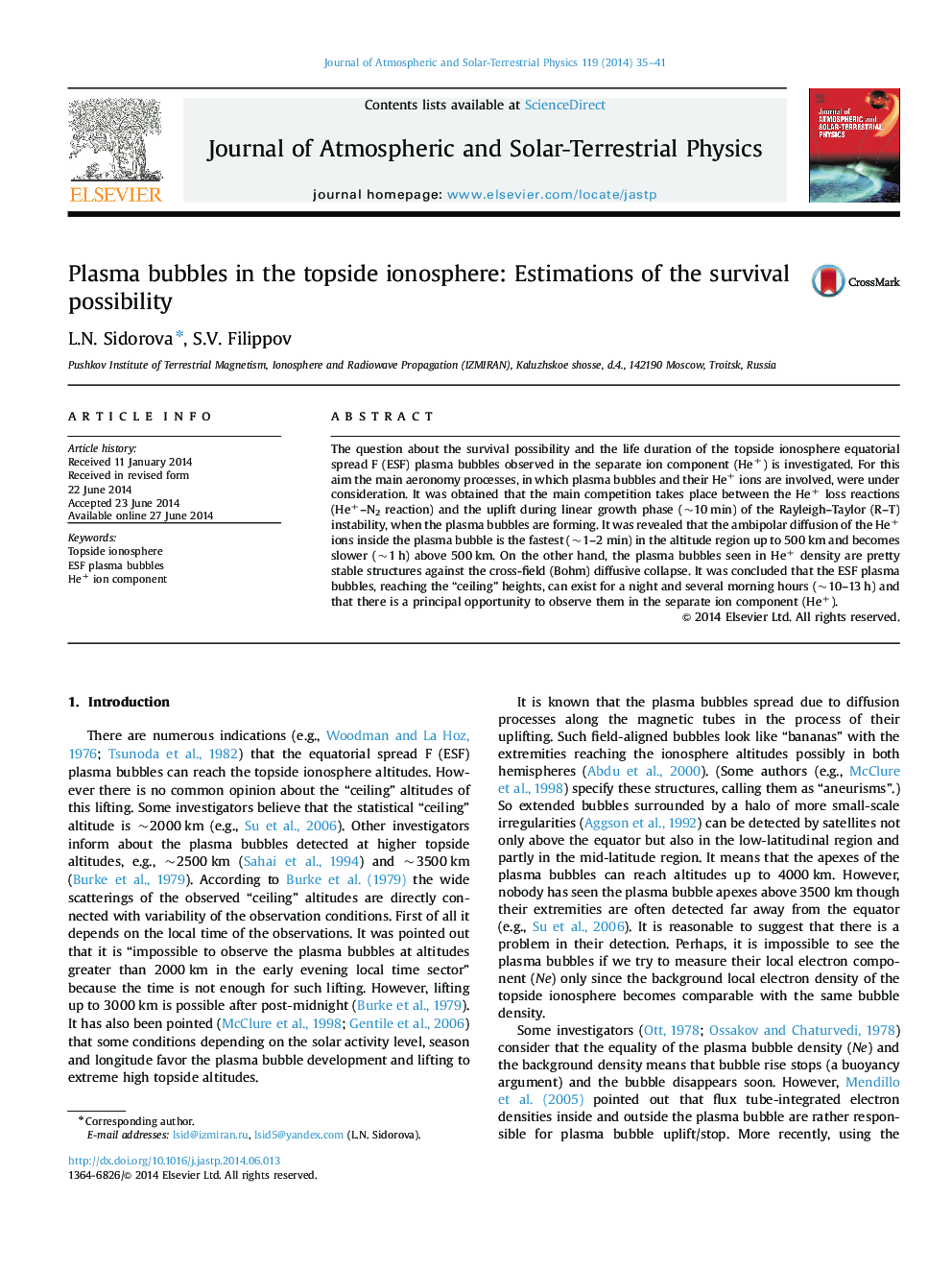| Article ID | Journal | Published Year | Pages | File Type |
|---|---|---|---|---|
| 8140136 | Journal of Atmospheric and Solar-Terrestrial Physics | 2014 | 7 Pages |
Abstract
The question about the survival possibility and the life duration of the topside ionosphere equatorial spread F (ESF) plasma bubbles observed in the separate ion component (He+) is investigated. For this aim the main aeronomy processes, in which plasma bubbles and their He+ ions are involved, were under consideration. It was obtained that the main competition takes place between the He+ loss reactions (He+-N2 reaction) and the uplift during linear growth phase (~10Â min) of the Rayleigh-Taylor (R-T) instability, when the plasma bubbles are forming. It was revealed that the ambipolar diffusion of the He+ ions inside the plasma bubble is the fastest (~1-2Â min) in the altitude region up to 500Â km and becomes slower (~1Â h) above 500Â km. On the other hand, the plasma bubbles seen in He+ density are pretty stable structures against the cross-field (Bohm) diffusive collapse. It was concluded that the ESF plasma bubbles, reaching the “ceiling” heights, can exist for a night and several morning hours (~10-13Â h) and that there is a principal opportunity to observe them in the separate ion component (He+).
Keywords
Related Topics
Physical Sciences and Engineering
Earth and Planetary Sciences
Geophysics
Authors
L.N. Sidorova, S.V. Filippov,
